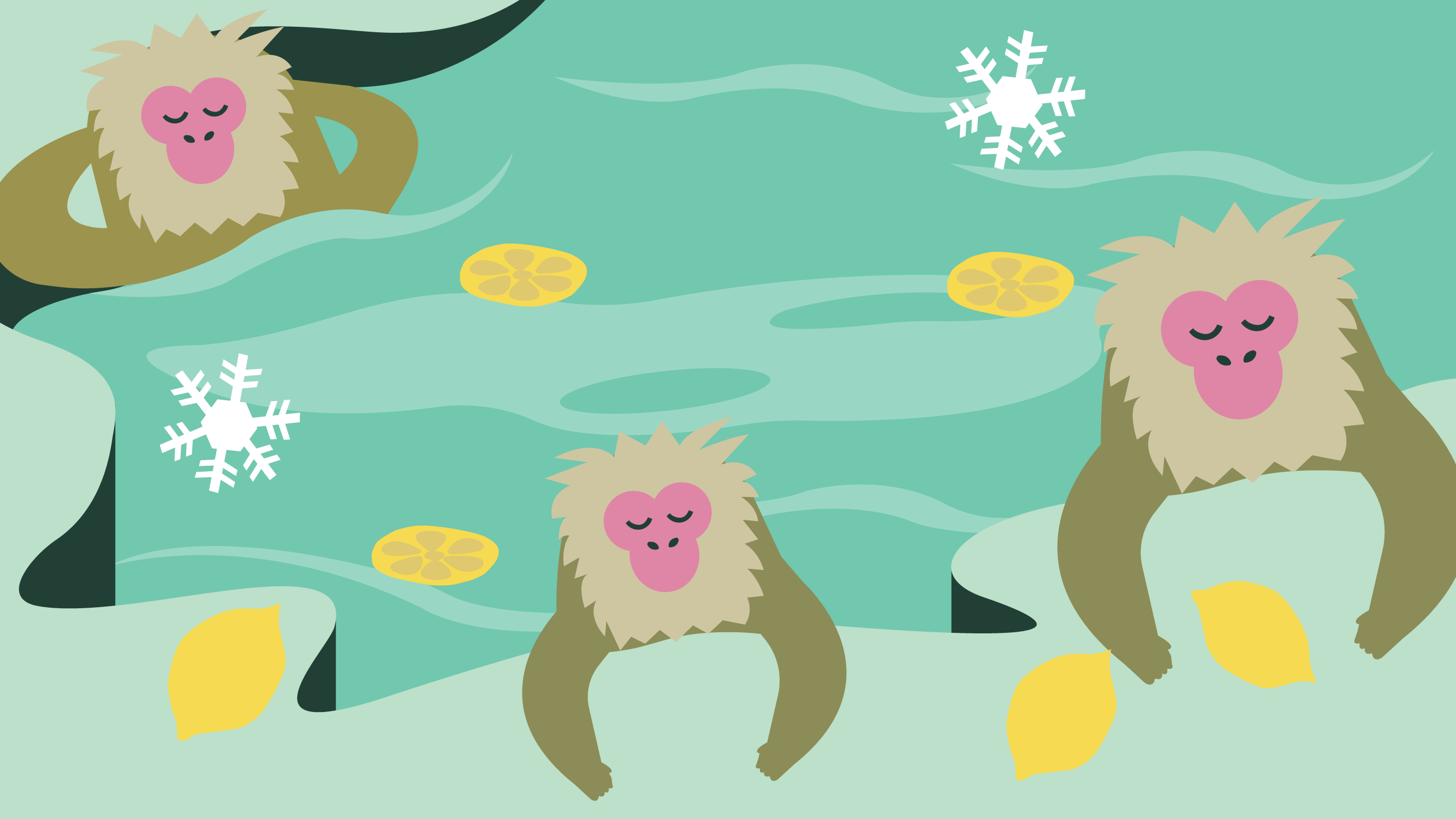
22, December 2023
Winter Solstice Celebrations in the Northern Hemisphere
The winter solstice, A.K.A the hibernal solstice, is the exact moment when the North Pole is as far from the sun as it will get all year. It occurs on the longest night, but marks the start of days getting longer again, which is cause for celebration! Here are some of the myriad ways the event is celebrated across the hemisphere.
Tōji, Japan
Historically in Japan, the winter solstice was linked to the sun being at its weakest – and therefore a fear of food shortages. This led to rituals associated with warmth, good health, good luck and the driving away of evil. One lingering tradition is the yuzu-yu, or yuzu bath, where people put yuzu fruits in their bath. Yuzu is an unusually hardy citrus fruit thought to represent survival of the winter and good fortune – and it has a distinctive aroma somewhere between mandarin and grapefruit. Bathing with yuzu is known to leave skin soft and boost immunity, due to high levels of vitamin C. It’s not just humans who enjoy the yuzu-yu ritual: the fruits are also thrown into onsen (hot spring) baths, where Japanese macaques famously bathe. And capybaras, which have something of a cult following in Japan’s zoos, enjoy yuzu baths at Tōji time, too.
Yaldā Night, Iran
Yaldā Night is a tradition from ancient Persia that carries on today in Iran, Turkey, Iraqi Kurdistan, Afghanistan, Azerbaijan, Tajikistan, Uzbekistan and Turkmenistan. On the night of the 21st December, friends and family gather around fires or candles to celebrate the rebirth of the sun, and the victory of light over darkness. Some people stay up all night, sharing stories and poetry (especially that of 14th-century Persian poet Hafiz) as they wait for the sun to rise. It is believed that eating the nuts and fruits of summer on Yaldā Night will keep winter illnesses at bay, so pomegranate and watermelon are often shared at the celebrations. Pomegranate in particular is significant, as it represents the life cycle and the idea of birth.
Dongzhi, China
‘Dong zhi’ translates to ‘the arrival of winter’, and it’s the name for winter solstice celebrations in China. The event has been honoured in China for over 2000 years, and was once deemed as important as the Chinese New Year. These days, Dongzhi isn’t as widely celebrated, but for those who do mark the occasion, it is time for a big family meal. Dishes vary according to region, but include dumplings and tang yuan (sweet and savoury glutinous rice balls). As well as marking the end of the harvest season, Dongzhi is linked to the Chinese yin and yang concept; after the winter solstice, the darkness of winter is balanced out by increasing light from the sun.
Stonehenge Gathering, UK
For those who lived off the land in prehistoric times, warmth and light were everything. The winter solstice was a light at the end of the tunnel, or in the case of Stonehenge, the light at the edge of the stone circle. No one knows exactly how Stonehenge was built, but one of the reasons why it was built was to help people keep track of time. Today, people still gather at the famous Wiltshire stone circle to peacefully celebrate sunrise the morning after the solstice. For those who don’t live nearby, or who’d rather watch from the warmth and comfort of home, English Heritage will be live-streaming the event on the morning of 22nd December.
Soyal, Hopi Tribe, USA
For the Indigenous Hopi People of northern Arizona, the winter solstice is marked with one of the most sacred rites on the calendar. It is believed that the Katsinam, or Kachinas, spirits that guide and protect the Hopi tribe, return from travels to the San Francisco mountains, bringing the sun with them. Celebrations last up to 16 days, and community members prepare by crafting and exchanging pahos (prayer sticks) from feathers. Pahos are used to bless homes, plants and animals, while children are given figures to represent the Katsinam. Soyal’s sacred and private traditions are held in underground chambers called kivas. Leaders dance with shields that represent the absence of the sun, prayers for bountiful crops are said, and corn is fed to an effigy of a plumed snake to prevent it swallowing the sun. Soyal is about welcoming the sun, purification and new beginnings.



